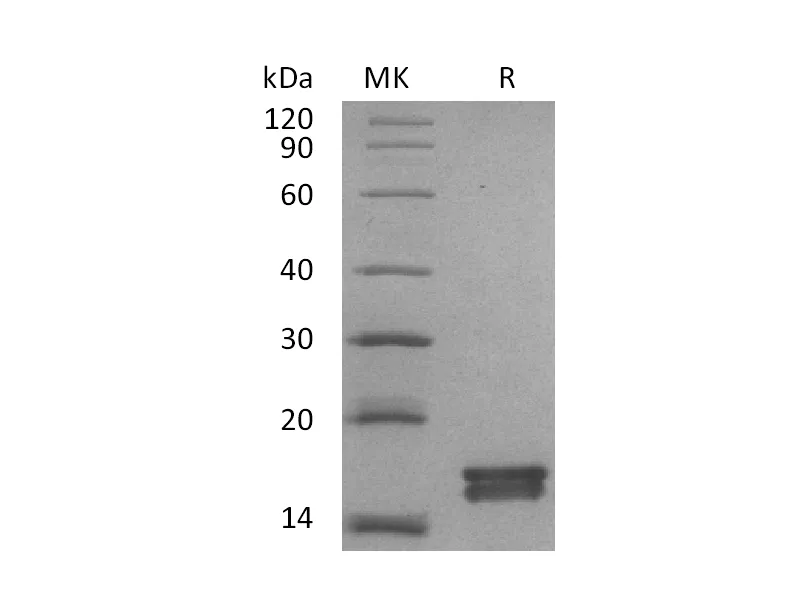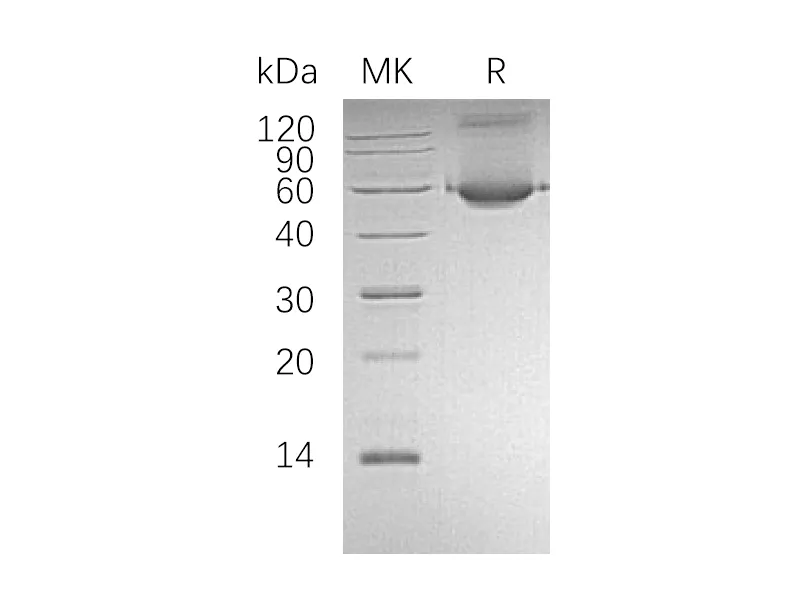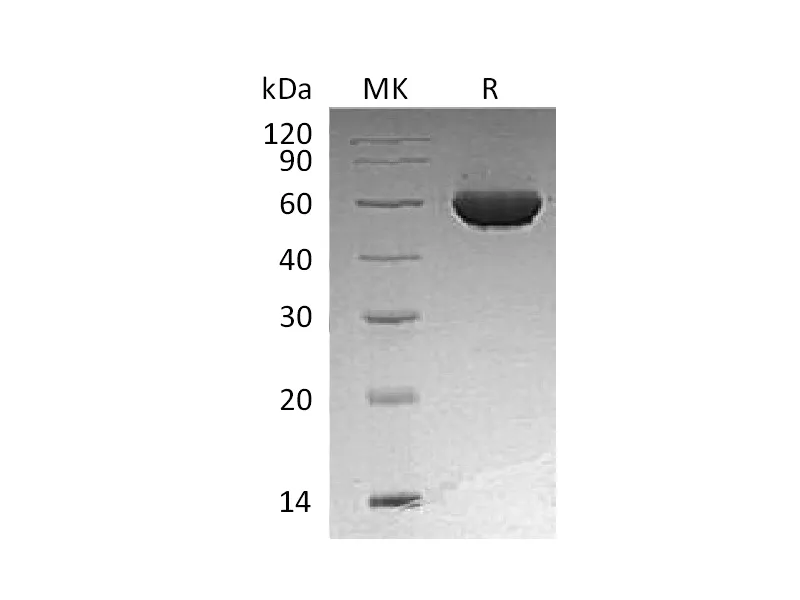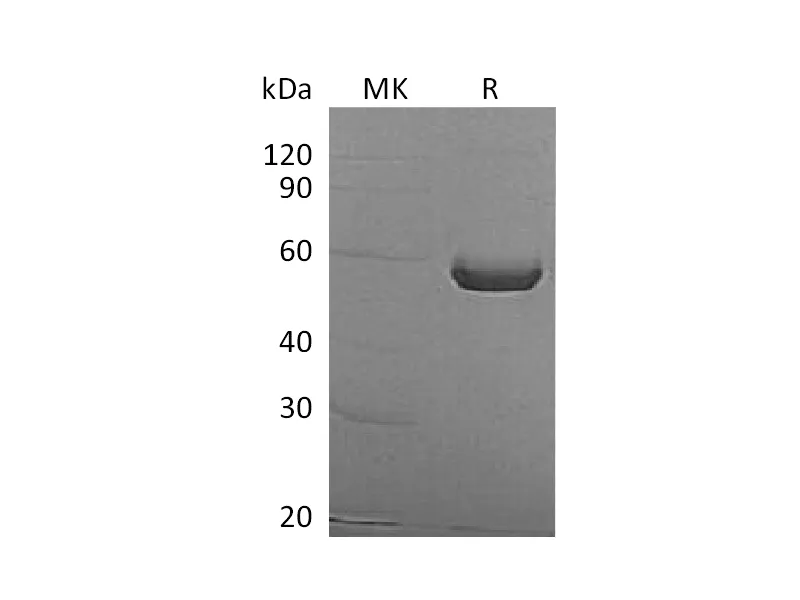Alternative Names
Vascular endothelial growth factor A; VEGF-A; Vascular permeability factor; VPF; VEGFA; VEGF
Background
Human VEGF121, also known as Vascular endothelial growth factor A, VEGFA, Vascular permeability factor, VPF and VEGF, is a homodimeric, heparin-binding glycoprotein which belongs to the platelet-derived growth factor (PDGF)/vascular endothelial growth factor (VEGF) family. VEGF-A is a glycosylated mitogen that specifically acts on endothelial cells and has various effects, including mediating increased vascular permeability, inducing angiogenesis, vasculogenesis, permeabilization of blood vessels and endothelial cell growth, increasing microvascular permeability, promoting cell migration and inhibiting apoptosis. Alternatively spliced transcript variants of VEGF-A encod either secreted or cell-associated isoforms. The lymphangiogenesis may be promoted by upregulation of VEGF121, which may in turn act in part via induction of VEGF-C. It binds to the FLT1/VEGFR1 and KDR/VEGFR2 receptors, heparan sulfate and heparin. NRP1/Neuropilin-1 binds isoforms VEGF-165 and VEGF-145. Isoform VEGF165B binds to KDR but does not activate downstream signaling pathways, does not activate angiogenesis and inhibits tumor growth.
Note
For Research Use Only , Not for Diagnostic Use.




